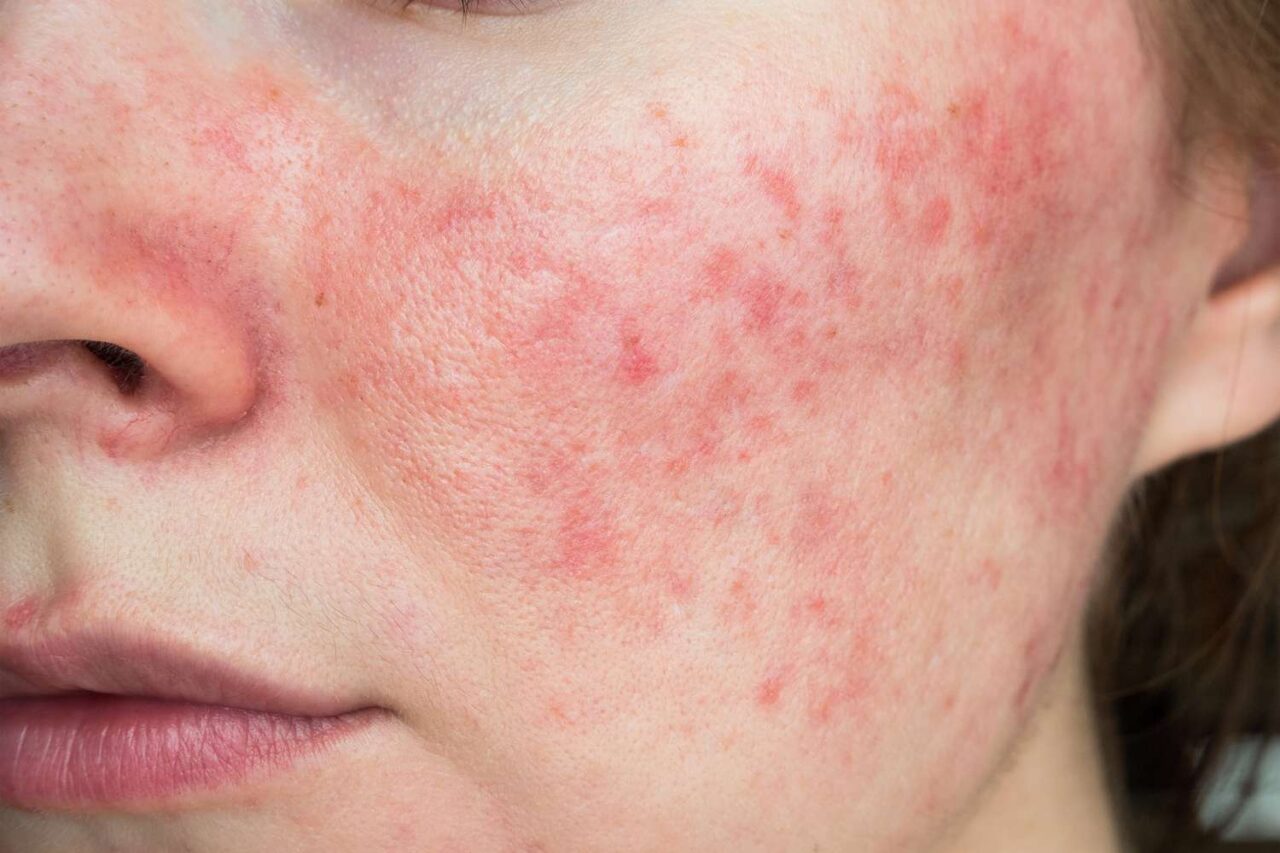Hives are a skin reaction that causes bumps, redness and raised patches that are incredibly itchy. They usually appear suddenly and go away on their own, but they can also grow, shrink and move around. About 25% of people experience hives at some point in their lives. Hives are annoying, but even more so when on your face. An itchy, swollen face is uncomfortable and embarrassing, so let’s discuss ways to manage it.

What Causes Hives?
Hives are often an allergic reaction to something you’ve touched or consumed recently. Some common triggers include:
- Food (most commonly nuts, shellfish, eggs)
- Medications
- Pollen
- Pet dander
- Fragrances in skin products or detergents
- Insect bites or stings
- Latex
They may also be caused by environmental triggers to the skin, such as extreme temperatures, intense sunlight, medical conditions like lupus or physical pressure on the skin. Or sometimes, there is no obvious trigger, and healthcare professionals are unable to determine exactly what caused a case of hives. This is pretty common.
How Can I Treat Hives on My Face?
Most of the time, hives go away on their own; no treatment is necessary. However, when the hives are itchy and visible on your face, you may be looking for ways to soothe and lessen the reaction. Some things you can do are:
- Do not scratch! This can be difficult, but the less you scratch the hives, the faster they disappear. Scratching irritates the skin, and the dirt under your fingernails may cause infection. Also, you could split the skin, as the skin on your face is quite delicate.
- Use allergy medications, like Benadryl or Claritin.
- Use antihistamine cream or hydrocortisone cream.
- Apply a cold compress to decrease the swelling and relieve the itching.
- Take a cool bath or shower to rinse allergens off your body. Add a colloidal oatmeal to the bathtub for extra relief.
How Can I Prevent Hives on My Face?
If you know your triggers for hives, it’s best to avoid those triggers whenever possible. For example, use unscented facial soaps if you know some fragrances trigger hives, or avoid touching your face or eyes after petting an animal if you’re allergic to pet dander.
If you don’t know your triggers, consider getting tested for allergies. This will identify your sensitivities so you can be more diligent about avoiding them, thus preventing more hives on your face. Call Carolina Pines ENT today for more information or to book an appointment.
